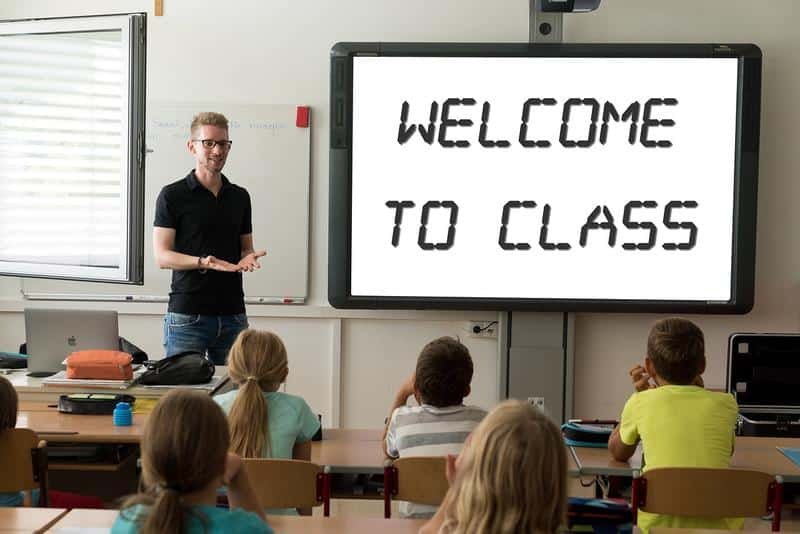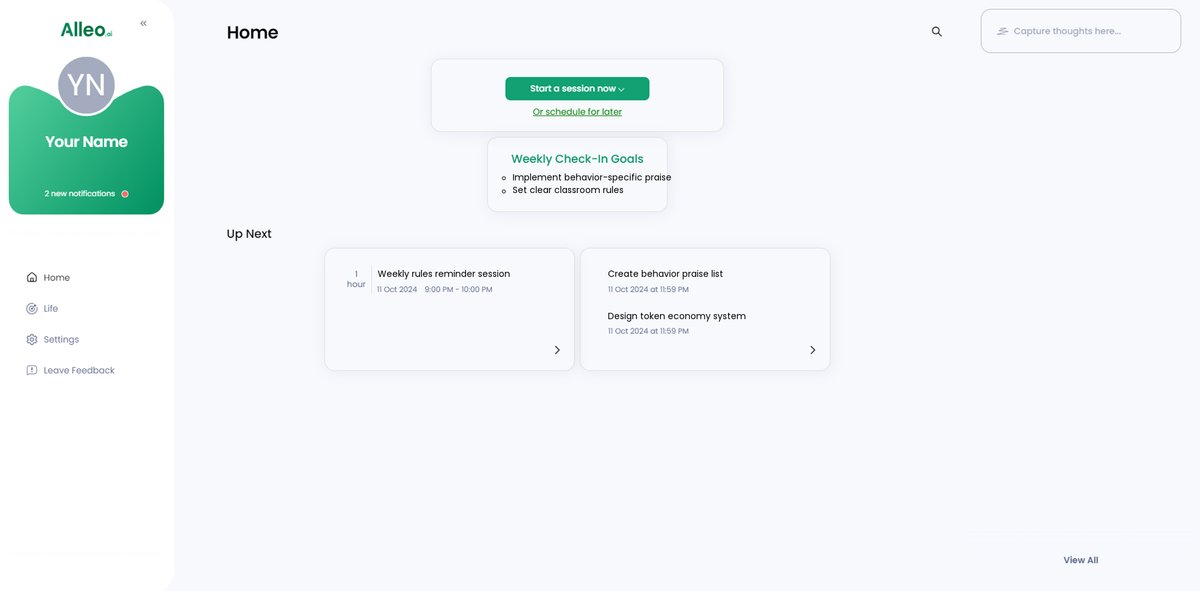4 Proven Strategies for Teachers to Manage Disruptive Classroom Behavior
Ever felt like you’re more of a referee than a teacher when managing disruptive classroom behavior?
Dealing with constant classroom disruptions can be overwhelming. As a life coach, I’ve helped many teachers navigate these challenges and develop effective classroom management techniques.
I’ve seen firsthand how exhausting it can be to manage disruptive behaviors and implement positive behavior interventions.
In this article, you’ll discover effective strategies for managing disruptive classroom behavior. You’ll learn how to use behavior-specific praise, set clear rules collaboratively, employ non-verbal cues, and implement a token economy as part of your classroom management approach.
Let’s dive into these proactive teaching approaches and student engagement strategies.

Understanding the Impact of Disruptive Behaviors
Let’s look at the reality: managing disruptive classroom behavior is crucial. Disruptive behaviors like talking, play fighting, and shouting out are more than just minor annoyances. They steal valuable teaching time and lead to a chaotic classroom environment, hindering effective classroom management techniques.
For many teachers, this means constantly juggling between implementing positive behavior interventions and trying to teach.
The emotional toll is significant. Teachers often feel frustration and exhaustion, leading to burnout. This makes it challenging to maintain student engagement strategies.
It’s not just about maintaining order; it’s about reclaiming the joy of teaching through effective discipline methods.
In my experience, many teachers struggle to keep students engaged while addressing disruptions. This constant battle can make it hard to focus on delivering quality instruction and creating a positive learning environment.
The result? Both teachers and students suffer, highlighting the need for proactive teaching approaches.
Now, let’s talk solutions for managing disruptive classroom behavior.

Core Strategies for Effective Classroom Management
Managing disruptive classroom behavior requires a few key steps. Here are the main areas to focus on to make progress with classroom management techniques.
- Implement behavior-specific praise consistently: Reinforce positive behaviors immediately and specifically as part of your positive behavior interventions.
- Establish clear rules collaboratively with students: Engage students in setting classroom rules and expectations for better buy-in and improved student engagement strategies.
- Use non-verbal cues to redirect disruptive behavior: Implement gestures to silently manage behaviors, an effective discipline method for dealing with challenging students.
- Create a token economy for positive reinforcement: Reward good behavior with tokens and tangible rewards as one of your behavior modification strategies.
Let’s dive into these proactive teaching approaches for managing disruptive classroom behavior!
1: Implement behavior-specific praise consistently
Using behavior-specific praise is crucial for managing disruptive classroom behavior and maintaining a conducive learning environment.
Actionable Steps:
- Identify specific positive behaviors you want to see.
- Create a list of behaviors like raising hands before speaking or staying seated during instruction as part of your classroom management techniques.
- Give immediate and specific praise when observing desired behaviors.
- Use phrases like “I appreciate how you waited your turn to speak” as positive behavior interventions.
- Track the frequency of your praises to ensure consistency.
- Use a tally sheet or an app to monitor your use of BSP as one of your student engagement strategies.
Explanation: Consistent use of behavior-specific praise helps students internalize positive behaviors and reduces disruptions, serving as one of the effective discipline methods.
This approach is supported by research, suggesting that BSP can significantly enhance classroom management.
By focusing on what students do right, you create a more positive and productive classroom atmosphere, which is essential for managing disruptive classroom behavior.
Key benefits of behavior-specific praise:
- Reinforces desired behaviors
- Builds student self-esteem
- Creates a positive learning environment
Implementing these steps can set the stage for a more engaged and well-behaved class, utilizing proactive teaching approaches for managing disruptive classroom behavior.

2: Establish clear rules collaboratively with students
Establishing clear rules collaboratively with students is crucial for managing disruptive classroom behavior and fostering a sense of ownership and respect in the classroom.
Actionable Steps:
- Hold a classroom meeting to discuss and establish rules.
- Let students suggest rules and vote on them, promoting effective discipline methods.
- Create a visual display of the agreed-upon rules.
- Design a colorful poster with the rules and place it in a visible spot, reinforcing classroom rules and expectations.
- Review and reinforce rules regularly.
- Start each week with a brief rules reminder session, employing proactive teaching approaches.
Explanation: Collaboratively setting rules with students helps create a shared responsibility for maintaining classroom order. This approach encourages student buy-in and adherence to the guidelines, supporting positive behavior interventions.
According to research, involving students in rule-setting can significantly reduce disruptive behaviors. By reinforcing these rules regularly, you promote a consistent and respectful learning environment, enhancing student engagement strategies.
Establishing clear guidelines together can make a noticeable difference in classroom dynamics and is an effective classroom management technique for managing disruptive classroom behavior.

3: Use non-verbal cues to redirect disruptive behavior
Using non-verbal cues to redirect disruptive behavior is essential for managing disruptive classroom behavior and maintaining a smooth and uninterrupted classroom flow.
Actionable Steps:
- Develop a set of consistent non-verbal cues for common disruptions as part of your classroom management techniques.
- Use gestures like a finger to the lips for silence or a raised hand for attention.
- Practice these cues with students regularly to reinforce positive behavior interventions.
- Role-play various scenarios where these cues are used and responses are demonstrated.
- Combine non-verbal cues with positive reinforcement as an effective discipline method.
- Acknowledge compliance with a smile or a thumbs up.
Explanation: Non-verbal cues are effective because they minimize classroom interruptions and maintain a calm environment, supporting student engagement strategies.
According to research, combining non-verbal cues with positive reinforcement can significantly improve classroom behavior.
This approach aligns with the trend towards proactive teaching approaches, ensuring that you spend more time teaching and less time managing disruptive classroom behavior.
Examples of effective non-verbal cues for behavior modification strategies:
- Eye contact and a gentle head shake
- Pointing to a visual reminder of classroom rules and expectations
- Using hand signals for common instructions
Implementing non-verbal cues can create a more harmonious and engaged classroom environment, effectively dealing with challenging students while creating a positive learning environment.

4: Create a token economy for positive reinforcement
Creating a token economy for positive reinforcement can significantly enhance classroom management techniques and help in managing disruptive classroom behavior by providing tangible rewards for good conduct.
Actionable Steps:
- Design the token economy system.
- Decide on tokens (e.g., stickers, points) and rewards (e.g., extra recess, small prizes) as part of your behavior modification strategies.
- Introduce the token economy to students.
- Explain how tokens can be earned and spent, aligning with classroom rules and expectations.
- Monitor and adjust the system as needed.
- Collect feedback from students and tweak the system for maximum student engagement strategies.
Explanation: A token economy provides students with immediate and clear incentives for good behavior. This approach aligns with the trend towards positive behavior interventions in classroom management.
According to research, positive reinforcement can significantly improve student engagement and behavior. By implementing a token economy, you create a structured and motivating environment that encourages students to adhere to classroom rules, effectively managing disruptive classroom behavior.
Tips for a successful token economy:
- Keep rewards varied and age-appropriate
- Ensure consistency in token distribution as part of effective discipline methods
- Gradually increase the difficulty of earning tokens
Implementing these steps can transform classroom dynamics, creating a positive learning environment and making learning more enjoyable for everyone, including challenging students.

Partner with Alleo for Effective Classroom Management
We’ve explored the challenges of managing disruptive classroom behavior and the strategies to address them. Did you know you can work directly with Alleo to make this journey easier and faster?
First, set up an account with Alleo. Create a personalized plan to tackle your classroom management challenges, including effective discipline methods and positive behavior interventions.
Alleo’s AI coach will help you set goals and track progress in managing disruptive classroom behavior. Receive tailored advice and reminders to ensure consistency in using student engagement strategies and proactive teaching approaches.
Stay accountable with text and push notifications to support your classroom management techniques.
Ready to get started for free? Let me show you how to create a positive learning environment!
Step 1: Log In or Create Your Account
To start transforming your classroom management, log in to your existing Alleo account or create a new one in just a few clicks.

Step 2: Choose “Building better habits and routines”
Select “Building better habits and routines” to develop consistent classroom management strategies that will help reduce disruptive behaviors and create a more positive learning environment.

Step 3: Selecting the life area you want to focus on
Choose “Career” as your focus area to address classroom management challenges, allowing Alleo’s AI coach to provide targeted strategies for improving your teaching experience and reducing disruptive behaviors.

Step 4: Starting a coaching session
Begin your journey with Alleo by scheduling an intake session to discuss your classroom management goals and create a personalized plan for implementing the strategies outlined in this article.

Step 5: Viewing and managing goals after the session
After your coaching session, check the Alleo app’s home page to view and manage the classroom management goals you discussed, allowing you to easily track your progress and stay accountable in implementing the strategies for reducing disruptive behaviors.

Step 6: Adding events to your calendar or app
Use Alleo’s calendar and task features to track your progress in implementing classroom management strategies, allowing you to schedule reminders for consistent use of behavior-specific praise, collaborative rule reviews, and token economy updates.

Bringing It All Together: Transform Your Classroom Today
We’ve covered a lot of ground. Managing disruptive classroom behavior is no small feat.
But you have the tools now. Implementing behavior-specific praise, collaborative rule-setting, non-verbal cues, and a token economy can make a world of difference in classroom management techniques.
These strategies for managing disruptive classroom behavior can help you reclaim your teaching time and reduce frustration. Remember, consistency is key when using positive behavior interventions.
You don’t have to do it alone. Alleo can support you in setting goals, tracking progress, and staying accountable with effective discipline methods.
Imagine a classroom where disruptions are minimized, and teaching is joyful again. Let’s make that a reality by creating a positive learning environment.
Start your journey with Alleo today. Try it for free and experience the transformation in managing disruptive classroom behavior.